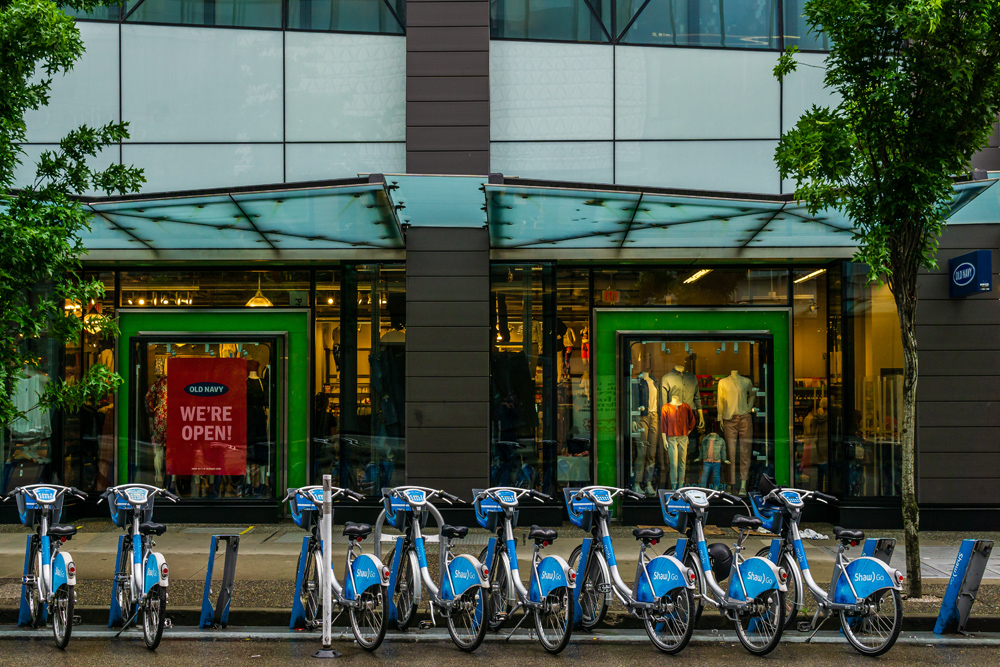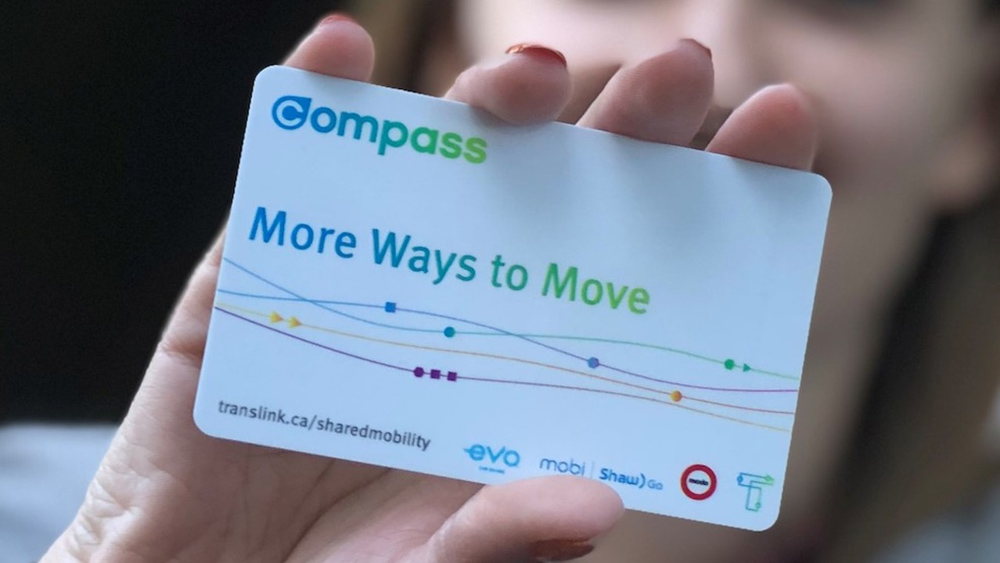
Sandra Phillips is CEO of shared transportation provider Movmi, which she founded in Vancouver, Canada, seven years ago.
Its raison d’etre is to advise organisations – including TransLink (Metro Vancouver’s transit agency), Volvo, Toyota, Denso, Servco and car-share firm Free2Move - on how to design, plan and carry out strategies to launch new mobility services.

As such Phillips is very well placed to define what ‘shared mobility’ – a newish term with multiple definitions – actually means.
“We use it in the sense of the shared use of a motorcycle, vehicle, bus,” she begins. “And it’s on-demand when and if the user needs it. So that essentially means it can be shared consecutively - like a bike-sharing scheme: I use it then you use it - or it can be shared together.”
A decade ago this was the realm of a few local, grassroots initiatives. “Then a very few, very brave corporates, like Daimler, ventured into this but it was a very small space, it was very nascent,” she continues. “I still don’t think it’s mainstream today but it has grown tremendously. Even if you have never heard the term ‘shared mobility’, if I asked you whether or not you’ve sat in a Lyft or Uber, which is one mode, you will tell me ‘yes, you have’; or you’ve been on a kick-scooter.”
Project explosion
So there is a lot more familiarity generally about the idea. “And I will also say, on the project side, it has just exploded,” she says.
While she concedes that a glut of often quite random schemes with no real integration between them is not always ideal for users, it does have an advantage: “It’s great because the services improve and the best will win. I think that’s where we’re at, at the moment.”
A wave of consolidation is coming, particularly on scooters, she thinks, “because we have so many options”.
So if the concept (however you define it) is not yet in the mainstream, it is at least pushing at the edges. Movmi (pronounced ‘Move me’) builds what it calls “the next generation of shared mobility”.
So what is required to actually implement such schemes - and how do we ensure they are so useful that communities actually use them?
Put simply, no-one is going to give up their personal car for a car-sharing scheme if there are not enough car-share vehicles to go round. It has to be convenient, not a needle-in-a-haystack scenario. “You need to build enough supply so you have a reliable network,” Phillips says.
Using Vancouver as an example “because I know the numbers inside out”, 10 years ago, there were around 300 car-share vehicles. Today, there are two operators with about 2,500 vehicles between them.
“We have bike-share with about 1,800 bikes,” she goes on. “And then we have buses and trains and SkyTrain [automated light metro network], So altogether we have about 4,000 shared vehicles and that does not include Uber and Lyft which started last year just before the pandemic. Once you have a decent amount of supply that people can rely on, you need to figure out how to stitch this together and integrate it.”
Phillips was born and brought up in Switzerland and moved to Canada as an adult. “I was used to everything being connected together,” she laughs. “And then I moved to Vancouver. Literally every day I was talking about ‘we need to integrate it’ and people were saying: ‘You’re like a crazy lady, it’s not the time.’ So I needed to be patient.”
RFP evaluation
It paid off: three years ago, the local public transit authority put out an open call for innovation around seamless integration. “The three local providers each put a bid in, TransLink said ‘let’s connect you all together and we’ll make this one pilot project rather than three disconnected ones’, and brought Movmi in to help do that,” she explains. “We’re literally right now in the RFP [request for proposal] evaluation for a much larger consumer-facing pilot and if that goes well, it’ll be rolled out to the public.”
She believes there is enough supply in many North American cities, even though they are behind Europe, which “has a tonne of supply”. “This is why Mobility as a Service [MaaS] - which is not my favourite term but let’s just use it because everybody knows it - is taking off specifically in Europe,” she points out.
Sometimes inspiration comes from unexpected quarters. The shadow cast by Covid-19 has forced many businesses, transportation included, to think anew about how they operate.
“One thing the pandemic has done is to put all the shared mobility providers together to figure it out,” Phillips says. “Because they all hurt; initially everybody lost ridership, and then some of them climbed up faster than others: bike-share rebounded quite quickly, car-share is still a little bit lower but not much lower than baseline, and then public transit is, at least in North America, still 60% below baseline.”

This means, she adds, that public transportation providers “all of a sudden figured out that maybe it is a good idea to talk to these new mobility providers and bring them in and create a more resilient ecosystem”.
Crucially, they should not see these new players as competition, she thinks, “but as another form of public transportation, or shared mobility, however you want to call it”.
Anyway, it all means that MaaS now is in the same place as shared mobility was 10 years ago: the ‘supply building’ phase, “just starting to gain traction”.
Incidentally, rather than MaaS, Phillips prefers the term ‘integrated mobility’ “because public transit has to be part of it”, with these new forms integrated into it. ‘Combining mobility’ is another way of looking at it: “It’s this idea that it’s a Swiss Army knife with different tools for different situations.”
Integrated transport
Others may argue, but Phillips thinks MaaS inherently contains the idea of advanced technology. “But I don’t think it always has to be super high-tech, especially in rural locations,” she explains. “I don’t think they can afford a super high-tech solution in a lot of cases, so you have to come up maybe with a bit of lower tech, but that’s still valid.”
So there is more than one way of building a more connected network of services; she does not think an app is necessary to produce good integrated transport.
“You can use a fare card,” she points out. “A lot of public transit is integrated with fare cards. I’m not saying that won’t change in the future, all I’m saying is that’s just as valid. If you have that integration, and I can access all of the different modes through an integrated fare card, and I pay through that - that’s just as good. Yes, I can’t do the planning, but a lot of people use Google Maps to do planning anyway.”
(And Google Maps has now begun to offer a payment option for transit too, of course.)
Still, you can understand that ‘integration’ might look more like ‘competition’ from a public transit provider’s point of view. How do you get over that natural aversion?
“Well, there’s a few challenges,” she agrees. “Part of it is just trusting a private provider – who ultimately also wants to move people.”
There is a need to find a common denominator, Phillips thinks, and the one that works in Movmi pilots is this: ‘We want to move people out of their personally-owned vehicle, that’s our number one goal - now can we be part of it or not?’
“We can wobble a lot in our space around which mode is better than the other, instead of saying we’re all trying to get people moving without having to own a personal car - that’s it!” she says.
The other lesson – which Phillips says she learned “the hard way” – is to be patient: “Trust between different organisations with different values and goals doesn’t happen in a three-month workshop situation. You have to be willing to invest.”
Covid lessons
Again, she thinks Covid has helped here “because they all were struggling, so they were all willing to invest in that time to figure this out together”.
Another issue concerns the way that private sector companies are sometimes treated by cities financially. “They want them to provide an equitable service: you know, cover the entire city, keep diversity, inclusion and equity concerns in mind – but then tax them or charge them licencing fees like a private business!” she laughs.
“Sometimes I feel like you can’t have both: if you have overarching goals to increase equity or only to have zero-emission vehicles because you have a greenhouse gas reduction goal, great! But then don’t tax them like a regular business. It ultimately ties into bigger goals so there needs to be a bit of a shift on how we tax the private businesses - and then they’ll come to the table.”
And as she points out, in many cases in North America public transit is operated by private bus or train operators – so what’s so different about scooters or bike-share? “I still don’t understand where the leap is,” she says.
Phillips is not only passionate about transportation, but about the people who work in it: she set up the group Empower Women in Shared Mobility “as a very personal thing”. When Phillips was at Car2Go, she was “literally the only female in a director-level position at the time and I didn’t actually realise what that meant until I left”. Young women at the company told her she was a role model even though “I didn’t see myself like that”.
When she founded Movmi, Phillips wanted to ensure that the new firm offered a platform to give greater visibility to, and awareness of, women in the industry.

But after five years she realised the landscape just hadn’t altered. “It still hasn’t changed who actually makes decisions,” she says. “I know so many female founders in the mobility space that struggle to attract capital and support and mentorship. There’s something fundamentally wrong because we have a workforce that is 30% female in transportation and then if you go to CEO level it is, I think, 3%.”
Empowering women
So Movmi created an award for women who have majority women-owned businesses in the mobility sector, with an appealing prize: a free Movmi consulting package.
“One of the interesting pieces for me was that we actually had to ask these female entrepreneurs to apply,” Phillips muses. “And I thought: this programme is for women, it’s made by women, all the mentors are women - so it just goes to show that if we want to help foster women entrepreneurs (and I’m using women because I just learned that ‘female entrepreneurs’ excludes certain groups of women entrepreneurs) we have to build platforms but we also have to encourage.”
While the scheme started with shared mobility in mind, it has found a broader resonance within the transportation industry.
“It got a lot more attention than we had thought,” Phillips says. “Maybe it is just a hot topic at the moment: equity and gender equity, racial equity, diversity but I feel like there’s so many more programmes right now popping up. And if that’s what happens, that there’s a ripple effect into other transportation-related fields, that’s really great. The more programmes there are, the more likely it is that we foster female leadership and female entrepreneurs in this space.”
She was intrigued to find that a number of well-connected male colleagues reached out to her around this time to ask how they could help: her practical answer was to go to the Empower Women in Shared Mobility interview list and look at the names.
“If you’re ever asked for panellists, or people to collaborate with you on projects, pick someone from that list,” she says. “They’re all great. And I know for a fact that one of the allies that we got has brought in several women into one of his most recent projects, which is fabulous.”
Perhaps it all comes back to patience, which is more or less where we started.
“Yes,” she laughs. “We’ve done it for five years and there’s really some movement and it’s not just around women: it’s just generally around more diversity and inclusivity in our hiring and in our design. So, I think it’s great. It’s to be seen if this is a phase we’re going through; as I say, it’s a hot topic and we’ll lose it again – or if it really sticks. On our side, we’re committed to it.”











